Impossible made possible


For 25 years, the people of Crete, the largest Greek island in the Mediterranean Sea, have been wanting to connect their power grid to the one that’s based on the mainland of Greece. This would ensure a more reliable, affordable and sustainable power transmission. But as straightforward and logical as the goal may sound, its execution was always considered to be non-viable. Why? The numbers speak for themselves:
you need a submarine power cable that runs 135 kilometres over razor-sharp rocks on a depth of up to 1,000 metres, that can support a tension of over 75 tonnes.
No company had the technology or the material to pull off this stunt. Until they met Jan De Nul Group.
i
i
Pieter Vanhulsel
Technical Department
“To handle the tension, we modified the rear deck of the Isaac Newton”
Javier Riverola
Offshore Analysis Engineering Team
“Not even 8-metre waves could stop us from installing this cable”
CONTAINERS
LOADING TOWER AND ARM
WINCH
TENSIONERS




CHUTE


Isaac Newton
Cable-laying vessel
i



No better cable-laying vessel for this challenge than our Isaac Newton. As one team, we worked together with the client to establish the Crete-Peloponnese Interconnection. The best possible route was determined. To ensure quality and sustainability, custom-made cable protection systems were developed for the most challenging seabed areas. The new link immediately contributes to a considerable increase in electricity generated from renewable sources on the island – as it replaces Crete’s oil-fired units – and will already provide about 34% of Crete’s total electrical demand in 2021.




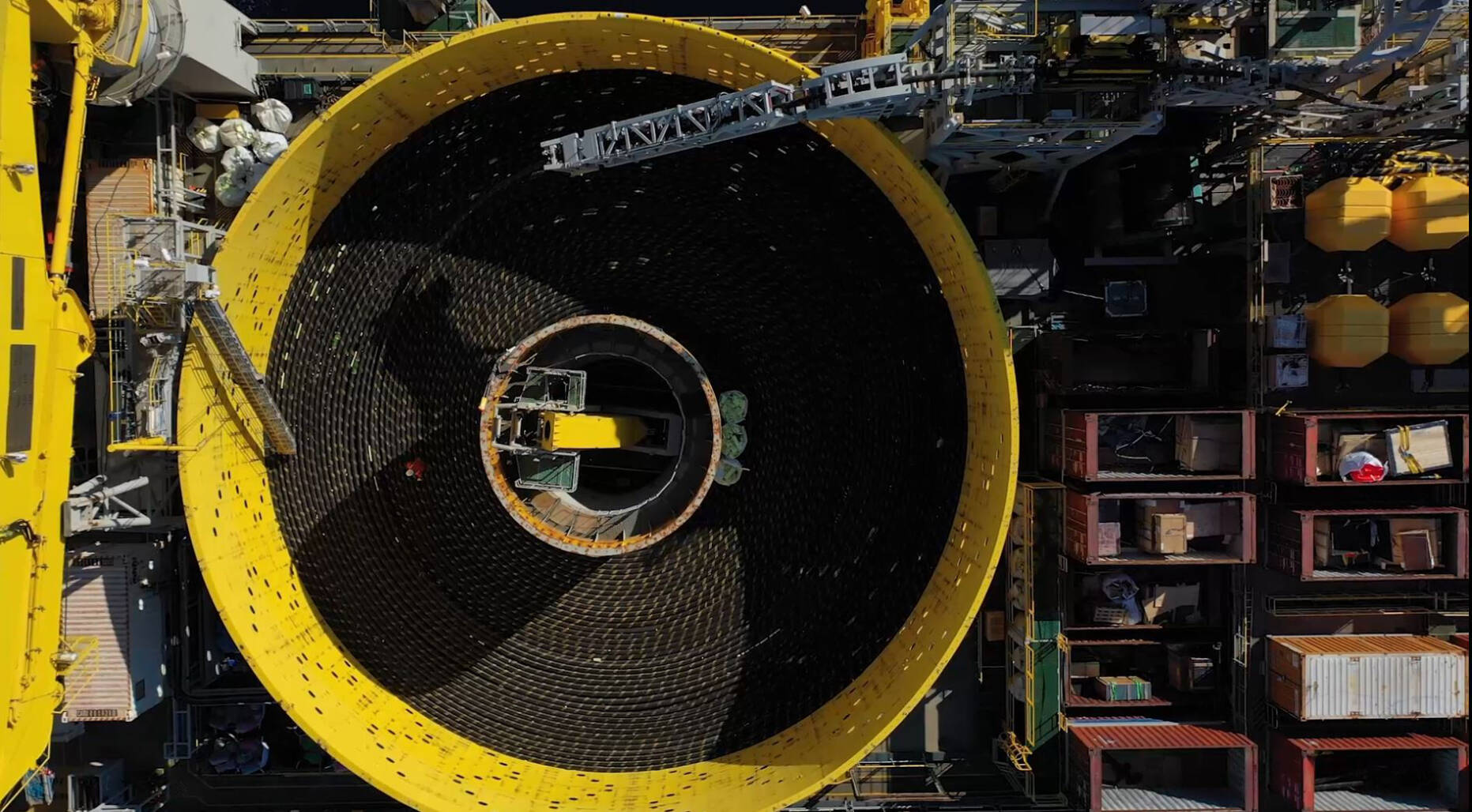
Wondering how we performed the works?

More details?
Check out our project summary.


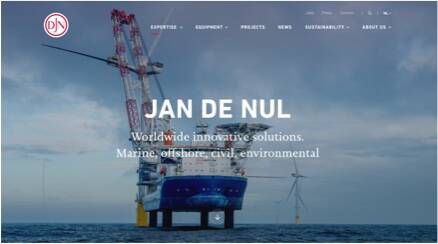
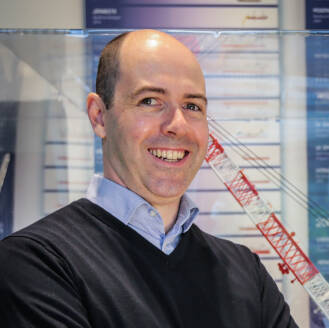
Looking for a partner to realize your Offshore Cables project?
Contact our Senior Commercial Manager
Bart Moens
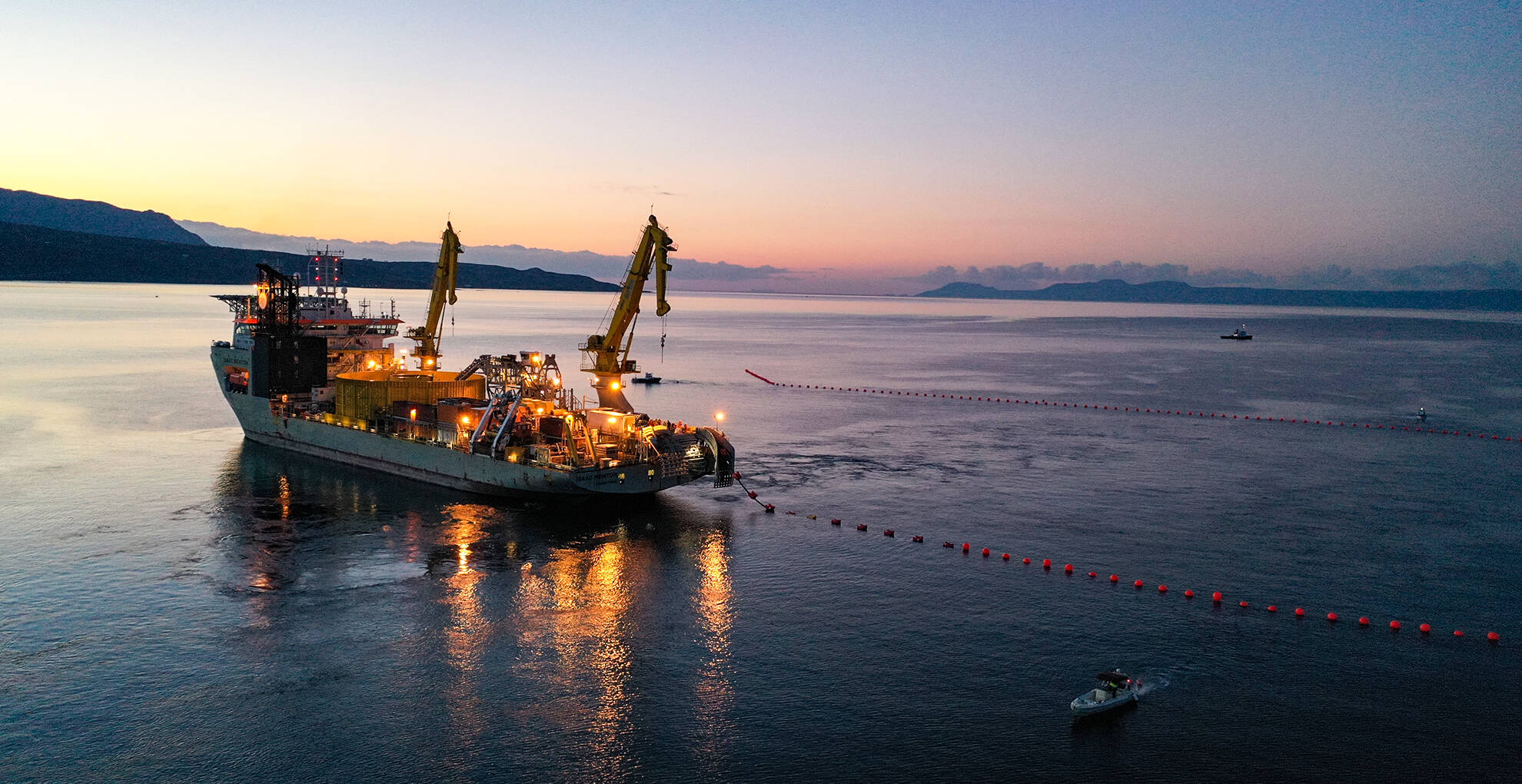
TENSIONERS
In order to deal with the high cable tensions a high capacity tensioners was mobilized. All equipment was perfectly aligned to have one smooth trajectory from chute to carousel. To provide the equipment with the necessary power, the vessel was outfitted with plug-and-play cabinets on deck to accommodate the correct supply to each consumer, with redundancy.
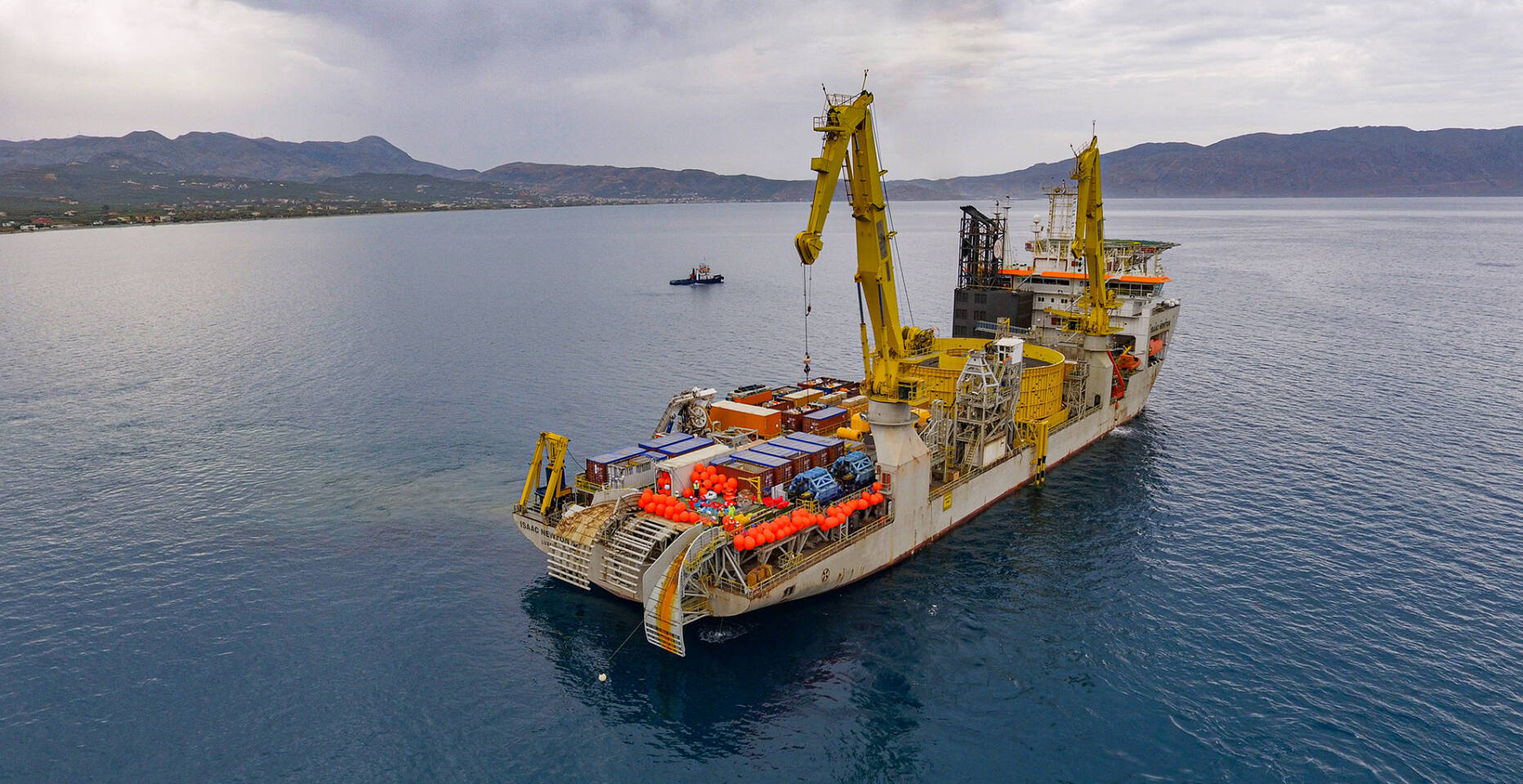
WINCH
In order to assist in dealing with the significant cable tensions in expected and unexpected conditions a high capacity winch was mobilized.
CONTAINERS
The long cable length and the rough seabed along the route caused the need for a lot of CPS installation onto the cable. Therefore, the current container capacity was doubled and safe access was foreseen to the different containers.

LOADING TOWER AND ARM
To cope with the significant cable depths, resulting in cable tensions up to 75 tonnes, the cable has two firm steel wrappings around it. In order to deal with the stiffness of the cable, we adopted our set-up to guide the cable as optimally as possible. We designed, calculated, procured, certified, transported and installed a new strong loading tower in less than 140 days. The new tower and loading arm is able to withstand the most severe weather conditions.
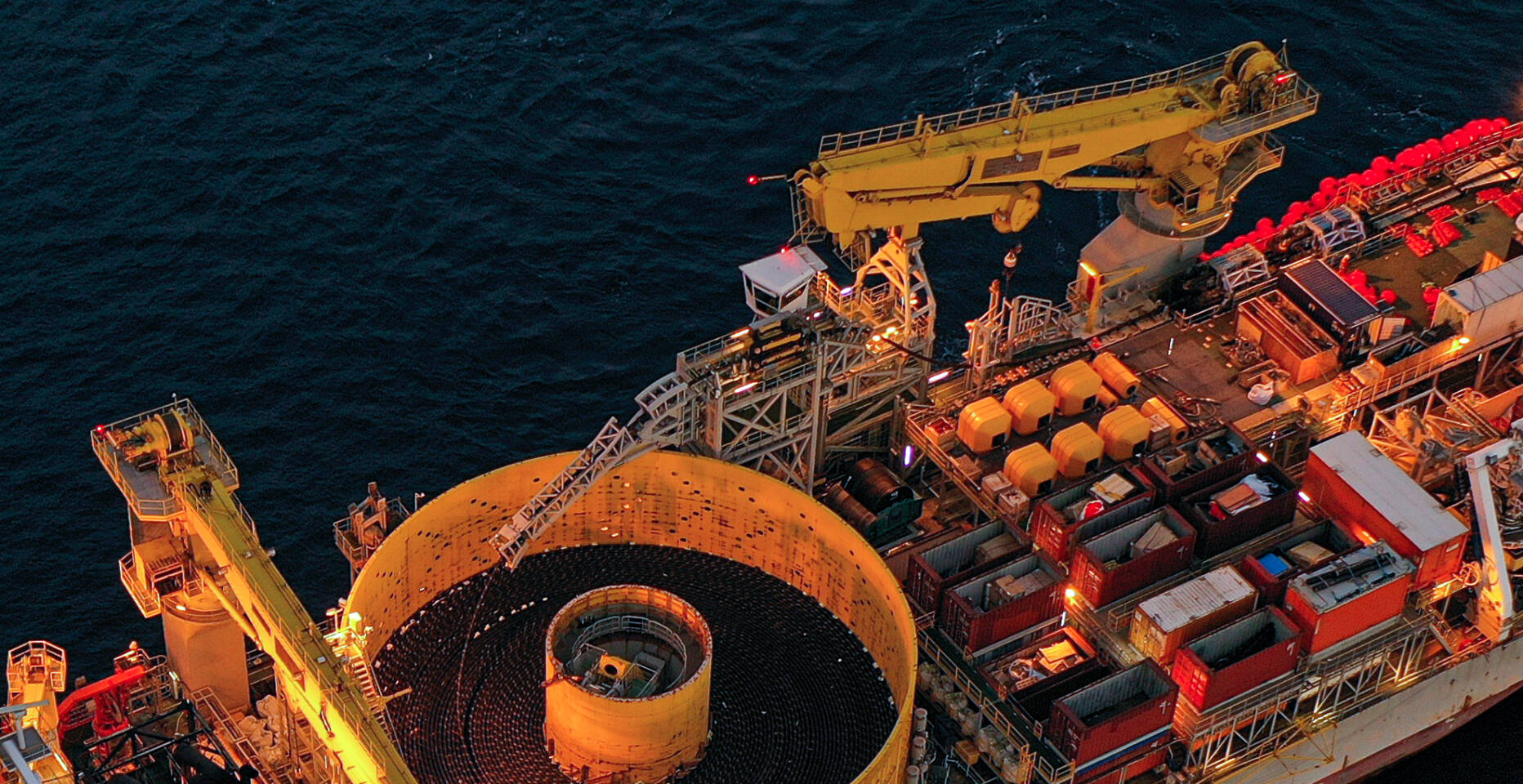
CHUTE
The new chute of 6m radius is capable of withstanding 75 tonnes of cable tensions in severe weather conditions. The total assembly of 18,000 kg was fabricated in only 6 weeks in Taiwan. Due to Covid19, all structures were mobilised from Taiwan to Greece to perform the installation on board of the Isaac Newton. The chute is hanging 85% outboard in order to create additional space for the installation of the CPS, the beach pull operations and the jointing operations.
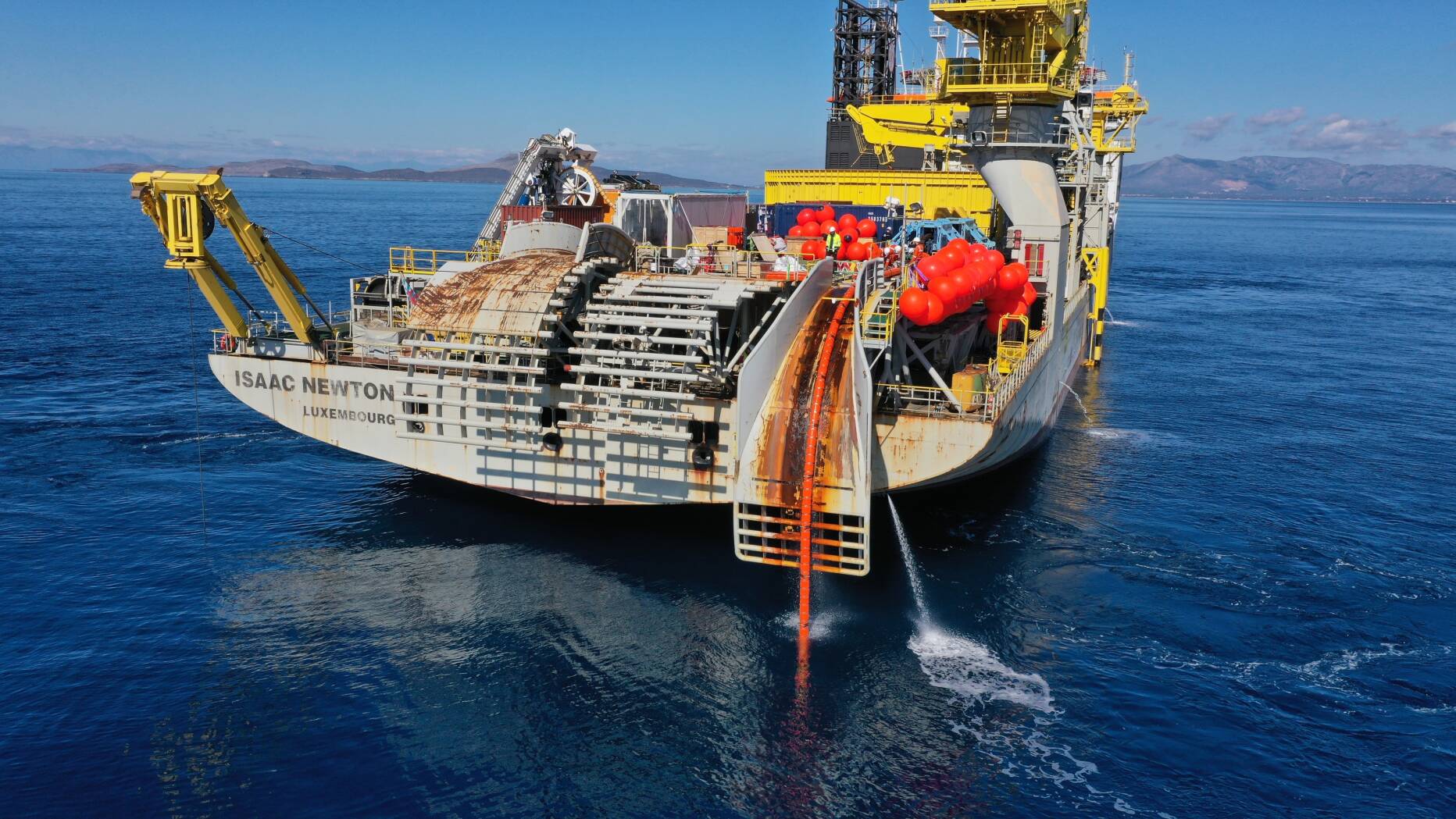
i
Max Noordzij
Captain Isaac Newton
"Thanks to the effort and motivation of the entire team we were able to conclude this project successfully."
Impossible made possible
i
Isaac Newton
Cable-laying vessel
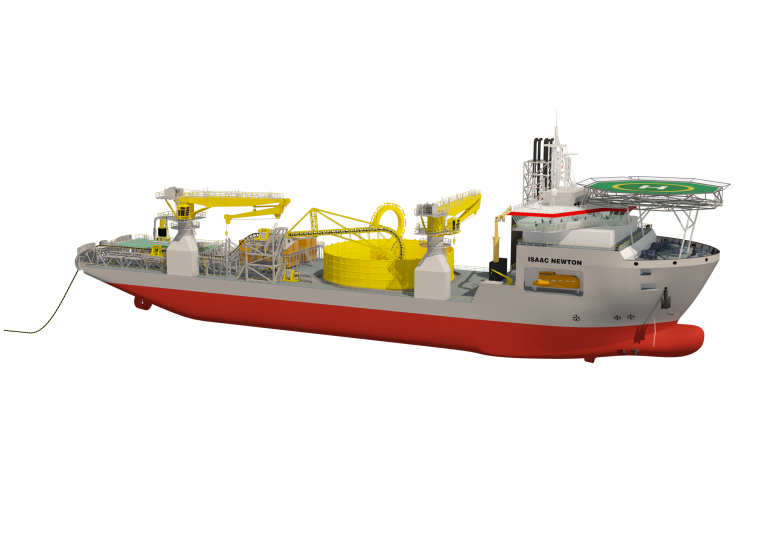
Pieter Vanhulsel
Technical Department
“To handle the tension, we modified the rear deck of the Isaac Newton”


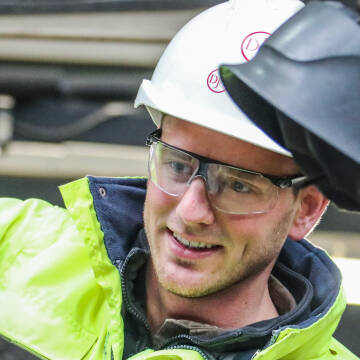
"In only eight months we designed, calculated, installed and tested all adaptations internally. 11 designers and calculators worked almost two months fulltime in support. As project engineer of the Technical Department, I made sure everything went as planned: from the start of the design to the drawing of models and structures up to the contract and execution of the adaptations by a subcontractor and our own crew. It almost seemed impossible, but we made it happen. Impossible made possible!"



LOADING TOWER AND ARM
CONTAINERS

Javier Riverola
Offshore Analysis Engineering Team
“Not even 8-metre waves could stop us from installing this cable”
No better cable-laying vessel for this challenge than our Isaac Newton. As one team, we worked together with the client to establish the Crete-Peloponnese Interconnection. The best possible route was determined. To ensure quality and sustainability, custom-made cable protection systems were developed for the most challenging seabed areas. The new link immediately contributes to a considerable increase in electricity generated from renewable sources on the island – as it replaces Crete’s oil-fired units – and will already provide about 34% of Crete’s total electrical demand in 2021.


For 25 years, the people of Crete have been wanting to connect their power grid to the one that’s based on the mainland of Greece. This would ensure a more reliable, affordable and sustainable power transmission. As straightforward as this may sound, the execution was always considered to be non-viable. Why? The numbers speak for themselves:
you need a submarine power cable that runs 135 kilometres over razor-sharp rocks on a depth of up to 1,000 metres, that can support a tension of over 75 tonnes.
No company had the technology or the material to pull off this stunt. Until they met Jan De Nul Group.



WINCH
Max Noordzij
Captain Isaac Newton
"Thanks to the effort and motivation of the entire team we were able to conclude this project successfully."

“Extreme depths, steep seabed slopes and rocky sections made the site conditions very challenging, especially at the continental shelf of Crete. Using 3D survey data, we defined all possible paths of the cable metre by metre.
With specialized software, we simulated the dynamics of the cable and the vessel. The Mediterranean Sea confronted us with potentially severe weather. We designed our operations to withstand winter storms with waves up to 8 metres.
To deal with the high tensile stresses, the cable was manufactured very rigidly. We performed state-of-the-art studies on the bending and torsional stresses of such cables. The result was that we could handle the cable in an optimal way.”
CHUTE
The new chute of 6m radius is capable of withstanding 75 tonnes of cable tensions in severe weather conditions. The total assembly of 18,000 kg was fabricated in only 6 weeks in Taiwan. Due to Covid19, all structures were mobilised from Taiwan to Greece to perform the installation on board of the Isaac Newton. The chute is hanging 85% outboard in order to create additional space for the installation of the CPS, the beach pull operations and the jointing operations.
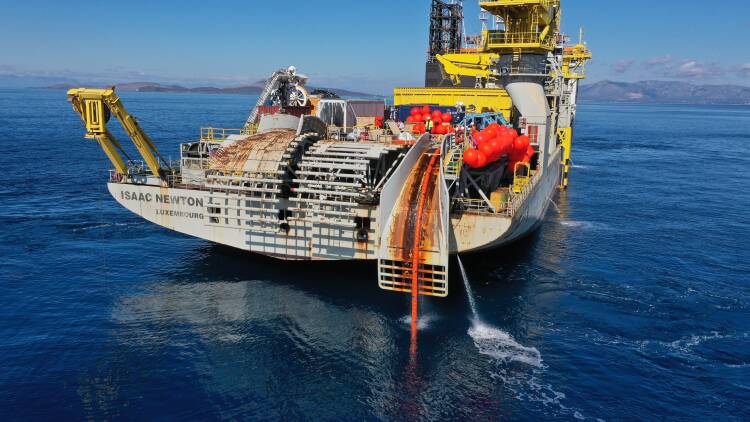
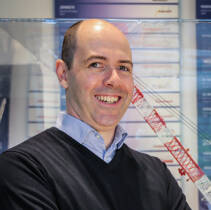
Looking for a partner to realize your Offshore Cables project?
Contact our Senior Commercial Manager
Bart Moens

Wondering how we performed the works?
TENSIONERS


More details?
Check out our project summary.


TENSIONERS
In order to deal with the high cable tensions a high capacity tensioners was mobilized. All equipment was perfectly aligned to have one smooth trajectory from chute to carousel. To provide the equipment with the necessary power, the vessel was outfitted with plug-and-play cabinets on deck to accommodate the correct supply to each consumer, with redundancy.
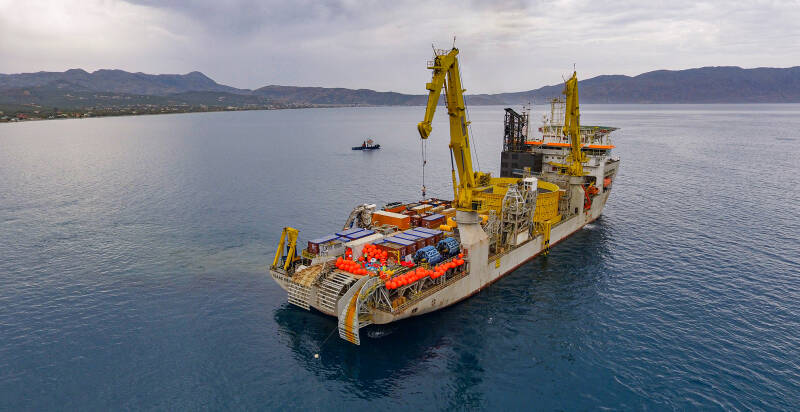
WINCH
In order to assist in dealing with the significant cable tensions in expected and unexpected conditions a high capacity winch was mobilized.
CONTAINERS
The long cable length and the rough seabed along the route caused the need for a lot of CPS installation onto the cable. Therefore, the current container capacity was doubled and safe access was foreseen to the different containers.
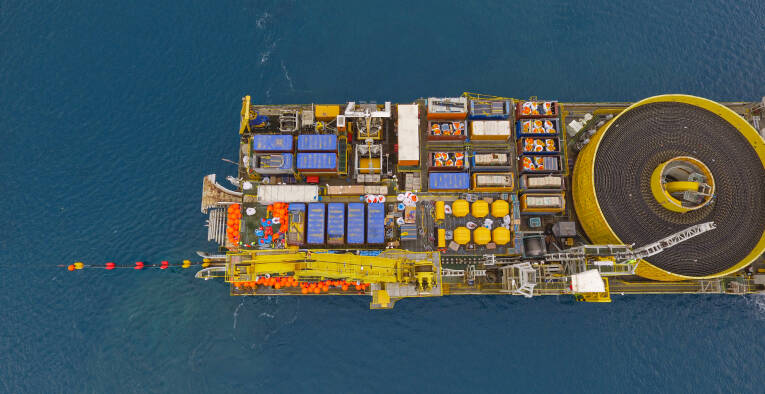
LOADING TOWER AND ARM
To cope with the significant cable depths, resulting in cable tensions up to 75 tonnes, the cable has two firm steel wrappings around it. In order to deal with the stiffness of the cable, we adopted our set-up to guide the cable as optimally as possible. We designed, calculated, procured, certified, transported and installed a new strong loading tower in less than 140 days. The new tower and loading arm is able to withstand the most severe weather conditions.
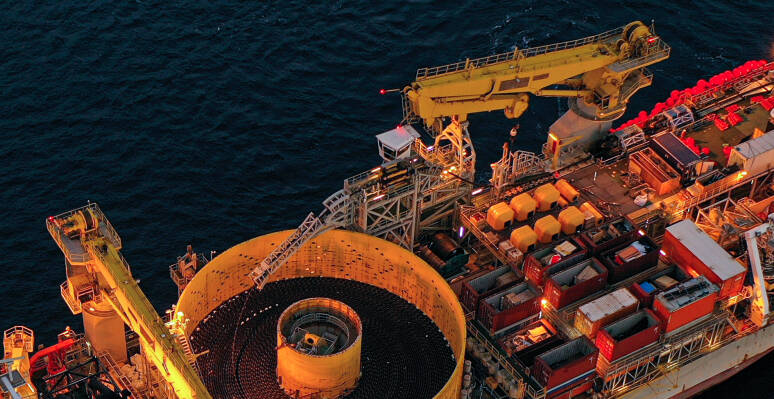

“This project challenged us to install the heaviest type of cables at an incredible depth. We applied more than 40 containers of cable protection equipment, all manually. The dedication and motivation of the crew is a major factor in the success of this project.
One year before the project actually started, we went through an intensive preparation period. We practised the application of the protective material on several testing cables. During the first campaign, an expert assisted us on board. Imagine, think, act. It’s our way of gaining operational control and achieving great results.”
CHUTE






